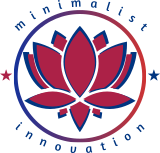Customer progress is your growth catalyst
In a world driven by rapid innovation and shifting market demands, staying connected to your customers’ evolving needs is not optional—it’s essential. Understanding consumer progress requires delving into the forces that drive and resist change. The Jobs-to-Be-Done (JTBD) framework, particularly the Four Forces of Progress, provides a powerful lens for analyzing why people adopt new solutions and abandon old ones. As described in the Jobs to Be Done Radio podcast, these forces include:
- Push of the Current Situation: The dissatisfaction with the current state.
- Pull of a New Solution: The allure and promise of a better future.
- Habit of the Present: The comfort and familiarity of existing solutions.
- Anxiety of the New Solution: The fear and uncertainty of making a change.
By unpacking these forces, businesses can align their solutions with consumer needs more effectively. At Minimalist Innovation LLC, we integrate this understanding into our Change Engineering approach to create strategies that enable customer progress for sustainable business growth. This is the foundation of Change Engineering, a practice that embeds adaptability and alignment into every solution we design.
This blog explores how businesses can stay in sync with their customers’ changing needs, ensuring they deliver value that evolves with the market.

“If you want to teach people a new way of thinking, don’t bother trying to teach them. Instead give them a tool, the use of which will lead to new ways of thinking.”
– Buckminster Fuller
Aligning your solutions with customer progress
Progress isn’t just about solving a problem; it’s about helping customers achieve their goals and aspirations. Whether it’s simplifying daily tasks, improving efficiency, or achieving long-term ambitions, progress is the driving force behind customer behavior. By identifying and addressing customer progress, businesses can create solutions that truly resonate.
Change Engineering is the practice of embedding adaptability and progress-focused thinking into business solutions. It moves beyond traditional change management by focusing not just on internal transitions but also on how products and services enable customer progress.
Change Engineering emphasizes designing tools and systems that naturally align with consumer behavior.
When I worked with a major coffee retail company, their finance team faced a critical challenge: their reporting processes weren’t aligned with the progress they needed to achieve. The team relied on a daily financial report generated at 4 AM to guide operations. This process was not only time-consuming but also lacked reliability, which eroded trust in the data and created inefficiencies in their decision-making process.
Through Change Engineering, we reframed the challenge to focus on the progress the team was striving for—timely, reliable insights that supported agile decision-making. By introducing real-time reporting, we enabled the team to access up-to-date financial data throughout the day, removing the dependency on the early morning report. This shift allowed the finance team to focus on what truly mattered: collaboration, planning, and adapting to changes in real time.
The results were transformative. The finance team no longer needed to wake up at 4 AM, instead holding planning sessions at a more practical time. Trust in the system grew, stress levels decreased, and decision-making processes became more dynamic and aligned with business needs.
This is the essence of Change Engineering—solving operational inefficiencies while improving the human experience. By aligning technology with the true needs of the business and its people, we didn’t just fix a problem; we engineered progress.
Here are some tips to keep in touch with the customer progress:
- Leverage Data-Driven Insights:
Use customer data to identify patterns, preferences, and unmet needs. AI and analytics tools can help uncover trends that signal evolving customer expectations. - Jobs-to-Be-Done (JTBD) Framework:
Focus on the “job” your customer is trying to get done, not just the product they’re buying. By understanding their goals, you can design solutions that meet their real needs. - Continuous Feedback Loops:
Regularly engage with customers through surveys, interviews, or feedback platforms to stay updated on their challenges and aspirations. - Appreciative Inquiry for Momentum:
Focus on what’s working well and amplify those strengths to build momentum for continuous improvement and alignment.

“What gets measured gets managed.”
– Peter Drucker
Measuring the impact of progress driven solutions
1. Increased Customer Retention:
When solutions align with customer progress, loyalty grows. Businesses often see retention rates improve by 20-30%.
2. Higher Adoption Rates:
Products designed with progress in mind are more likely to be embraced, with adoption rates increasing by 15-25%.
3. Enhanced Customer Satisfaction Scores:
Solutions that address functional, emotional, and social progress lead to higher satisfaction levels, reflected in metrics like NPS.
4. Improved Market Share:
By staying aligned with customer progress, businesses can outperform competitors and capture a larger market share.
.


